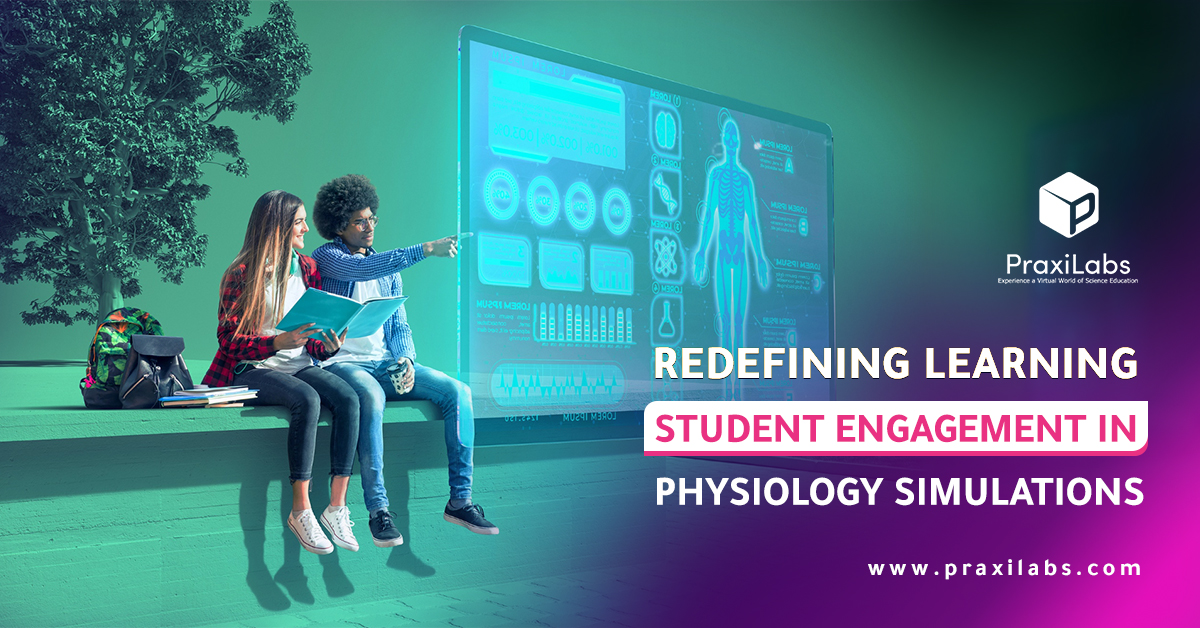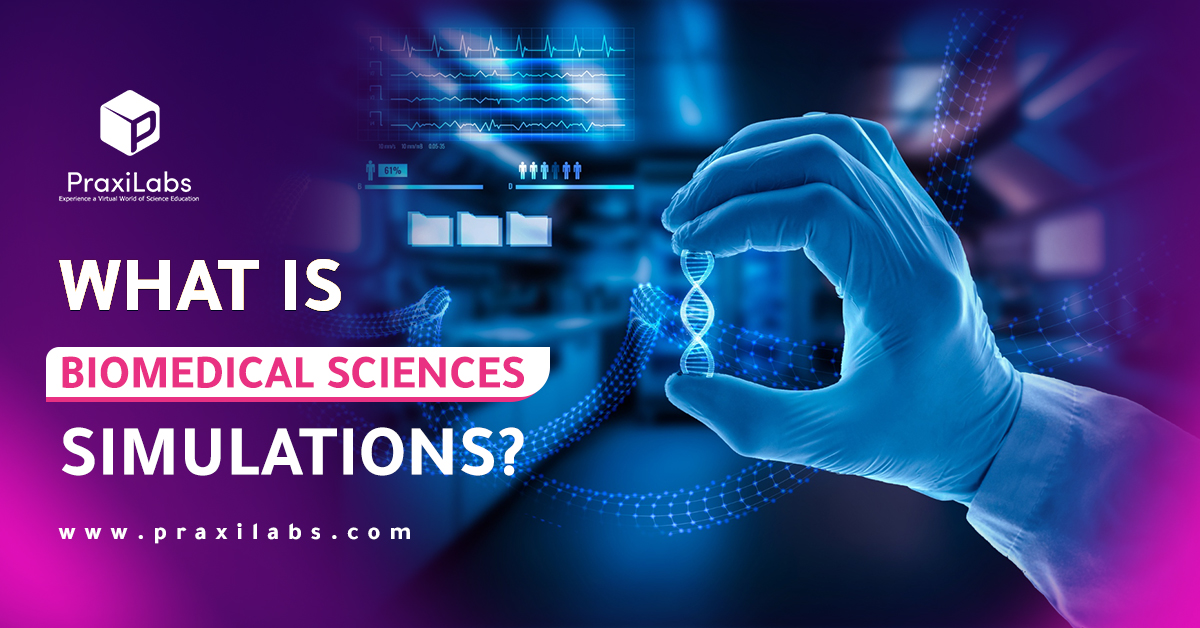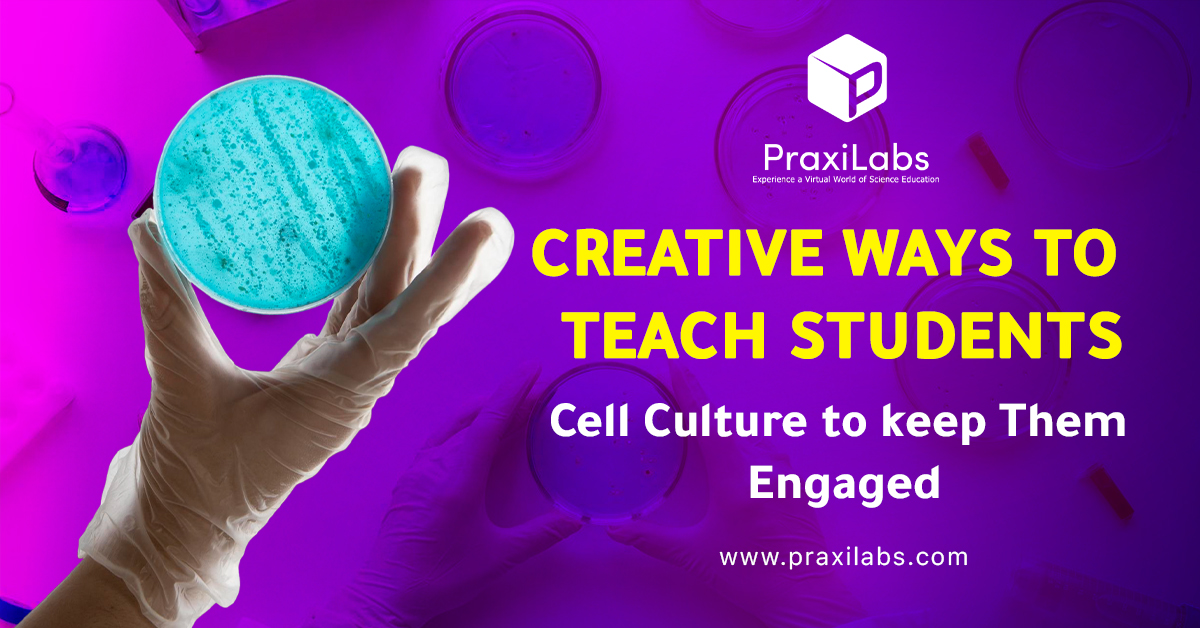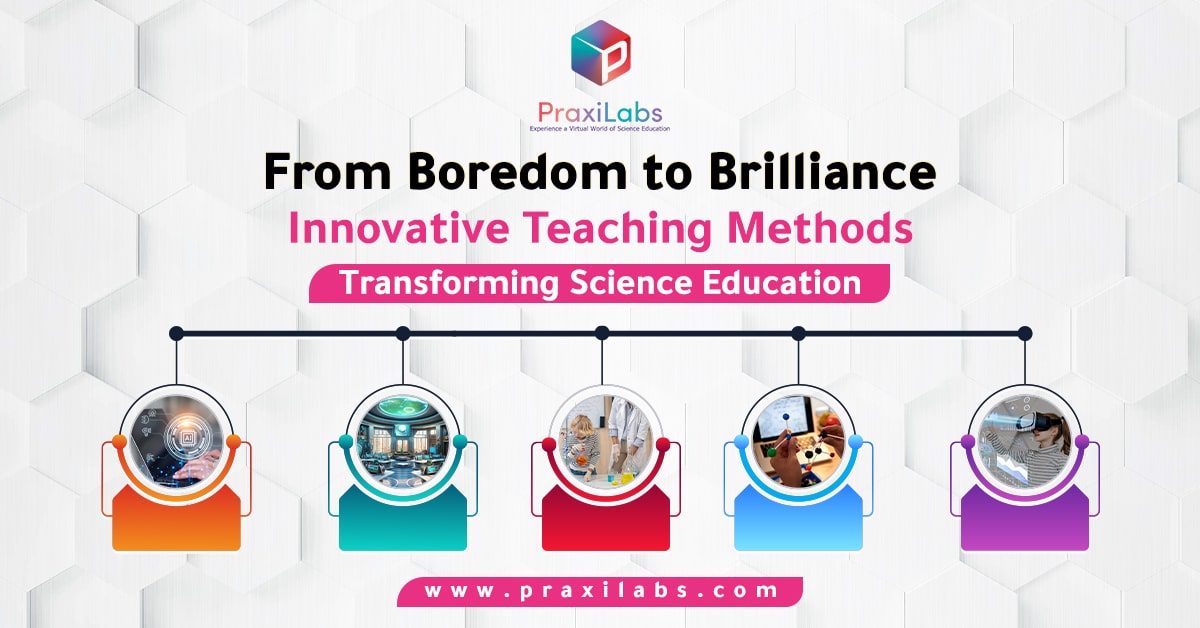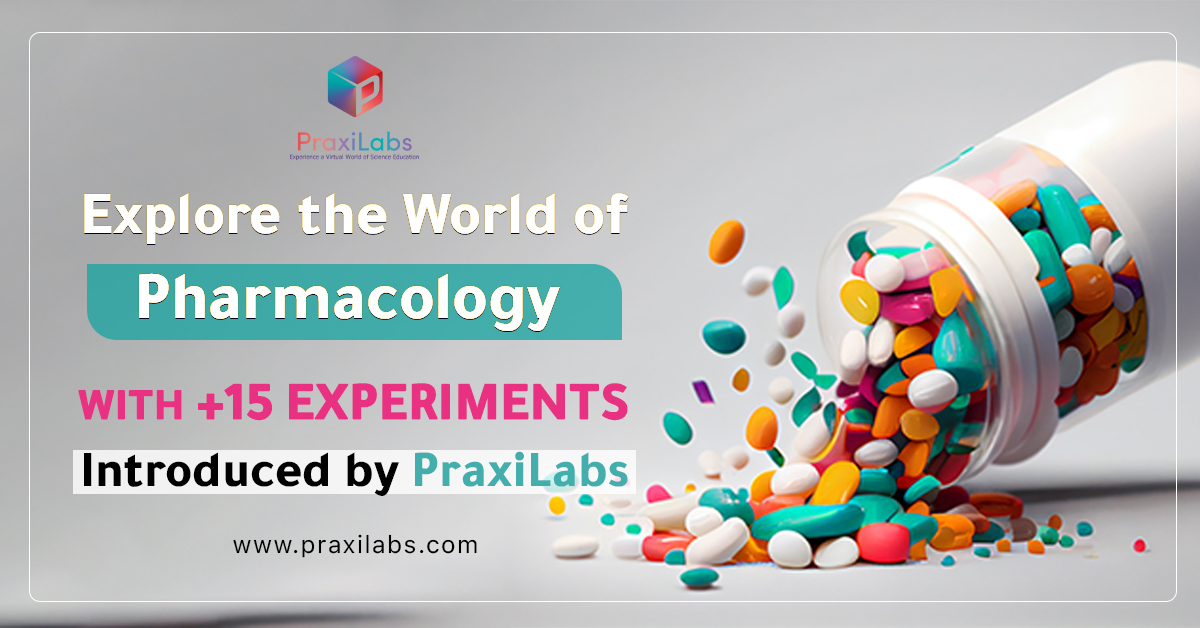-
E-learning

Redefining Learning | Student Engagement in Physiology Simulations
Last Updated on January 1, 2024 by Nourhan Essam In today’s world, student engagement in physiology simulations has become increasingly critical. Engaging students in these simulations can lead to enhanced learning experiences and deeper authentic understanding, ultimately improving their educational journey. This blog post will explore the significance of building student engagement in physiology simulations, and strategies for teaching physiological concepts during class time. We will also delve into PraxiLabs virtual lab simulations in physiology. Virtual Lab Simulations | New Approach to Building Student Engagement in Physiology Virtual lab simulations have emerged as a groundbreaking approach to build student engagement in physiology. These simulations offer a dynamic and immersive learning experience that captivates students and deepens their understanding of complex physiological concepts. By leveraging virtual lab simulations, educators can revolutionize the way physiology is taught and empower students to actively participate in their own learning journey. Enhancing Accessibility and Flexibility Virtual lab simulations break down barriers, providing students with access to high-quality laboratory experiences regardless of their location. This accessibility fosters inclusivity and ensures that all students have the opportunity to engage in practical, hands-on learning, irrespective of their physical proximity to a traditional laboratory setting. Additionally, the flexibility …
Read More » -
Biology

What are Biomedical Sciences Simulations?
Last Updated on January 22, 2025 by Zinab Hasssan Biomedical Sciences Simulations are virtual simulations that are used to learn and understand several topics in physiology, human anatomy, pathology, and more in a 3D interactive environment. They also help enhance students’ chemistry and biology skills that are relevant to healthcare. In this blog, we will explore what are biomedical sciences simulations and how these simulations enhance the students’ experience and learning outcomes, especially in biomedical sciences. Virtual Biomedical Sciences Simulations Enhance Student Experiences What are Biomedical Sciences Simulations? Virtual biomedical sciences simulations enhance student experiences by providing a 3D immersive and flexible environment for more engagement and understanding of complex concepts. These simulations enable students to safely and easily conduct their biomedical simulations anytime, anywhere and an unlimited number of times. Simulations for Exploring Complex Concepts Virtual biomedical sciences simulations, offered by PraxiLabs Virtual Labs, provide several accessible lab simulations to support biomedical courses and online biomedical lectures, involving several disciplines such as molecular biology, immunology, biochemistry, microbiology, toxicology, pharmacology, cell culture, and more. So, by using these biomedical simulations, students can explore basic and complex concepts in biology and chemistry that empower them to enhance their knowledge and skills …
Read More » -
E-learning

Creative Ways to Teach Students Culturing Cells
Last Updated on January 22, 2025 by Zinab Hasssan _Are you a teacher or instructor looking for interactive and creative ways to teach your students how to culture cells? culturing cell can be a challenging task for most students, but with the right approach, it can become an exciting and engaging learning experience for them. what is the Cell culturing Cell culturing is the growth of cells from an animal in an artificial, controlled environment. Cells are removed either from the organism directly and disaggregated before cultivation or from a cell line or cell strain that has previously been established. In this blog post, we will shed light on 5 creative ways to teach students culturing cells to keep them engaged, as cell culture is a very important protocol for preparing cells needed for all subsequent In Vitro Genotoxicity and Cytotoxicity assays. Top 5 Creative Ways to Teach Students Counting Cells to keep Them Engaged Using Interactive Models and Simulations Using interactive models and simulations plays a vital role in keeping all students engaged and enhancing their learning outcomes, as engaging students with these creative approaches helps students understand the scientific concepts, protocol, and principle of work clearly before starting …
Read More » -
E-learning

The Most Innovative Teaching Methods in Science
Last Updated on December 9, 2024 by Ahmed Samy Science education plays a critical role in the future of the upcoming scientists, innovators, and problem solvers. Traditional teaching and education methods often fail to engage students and ignite their passion for scientific exploration, and this is where new innovative teaching methods in science education come into play. In this blog post, we will delve into the most innovative teaching methods in science education that are revolutionizing the way students learn and teachers teach. These methods not only make science more accessible and enjoyable but also enhance creativity, scientific exploration, critical thinking, and a lifelong love for scientific inquiry. 1- Using Augmented and Virtual Reality Technologies Augmented reality is a technology that allows a combination of real and virtual objects. It allows the overlaying between information and virtual objects in our real-world scenes. It depends on using the existing environment and adding information to it to make a new artificial environment. It enables users to perceive the real world around them and incorporate virtual objects that suit the purpose for which it’s being used, in contrast to virtual reality technology, which only allows users to interact with virtual reality. The integration …
Read More » -
Chemistry

Reveal the Secrets of PraxiLabs Chemistry Virtual Labs
Last Updated on February 8, 2024 by Zinab Hasssan Virtual Labs now are one of the most critical e-learning methods that are used in facilitating science education, especially in chemistry. Chemistry virtual lab is an online simulation of a real chemistry lab. It is designed to help students conduct their chemistry experiments easily without any risks in a safe environment and in a manner resembling a real lab. In this blog, we will shed light on the secrets of PraxiLabs chemistry virtual labs, their features, how they help students, the best tips and practices, and we will take a look at our diverse catalog for chemistry simulations. Exploring the Limitless Features of Chemistry Virtual Labs The main purpose of doing chemistry experiments at virtual labs is to help students link chemical computations with the real chemistry lab and provide a safe and interactive learning experience. Chemistry virtual labs introduce several benefits and features to increase students’ learning outcomes such as: Safety: Chemistry virtual labs protect students from many hazards in real labs like direct exposure to toxic substances or radioactive chemicals as there is no direct handling of these dangerous materials; all experiments are done online. Flexibility and Accessibility: Students …
Read More » -
E-learning

The Future of Science Education | PraxiLabs’ Roadmap
Last Updated on December 9, 2024 by Ahmed Samy The future of science education is now closely linked to technologies that are widely accepted and used, especially during and after the COVID-19 pandemic, which made the use of these technologies part of the regular curriculum. Virtual labs now are one of the most effective educational technologies that are used in universities and schools to enhance active learning outcomes and student engagement. In this article, we will take a closer look at the future of science education how Praxilabs is paving the way for a revolution in the field of science education (PraxiLabs’ roadmap). The Evolution of Science Education | A report by Oxford University Press According to the Evolution of Science Education Report 2021 by Oxford University Press, at the start of 2021, experts and teachers around the world responded to the report’s survey by providing the answers to the following five key questions: What should the core purpose of science education be? How well does current science education prepare learners? What are the biggest challenges that students might face in their future that science education should prepare them for? What new skills and competencies do students need to develop …
Read More » -
virtual learning articles

Learn How to Determine the Coefficient of Viscosity Using Stoke’s Method
Last Updated on August 29, 2023 by Nourhan Essam Imagine that you have a cup with a hole in the bottom. If you pour honey or glycerin into the cup, you will find that the cup drains very slowly. But in the case of water, the cup will drain much more quickly. That happens because “viscosity” is higher in the case of honey or glycerin when compared to other liquids’ viscosities. Viscosity is one of the essential parameters that describe the physicochemical properties of liquids. It is a measurement of a fluid’s resistance to flow or change in shape at a given rate In this article, we will discuss what is meant by viscosity, the concept of coefficient viscosity, how to determine the coefficient of viscosity using Stoke’s method, and more. What is Viscosity? Viscosity can be defined as a force multiplied by a time divided by an area. It is a measure of a fluid’s resistance to flow and describes the internal friction of a fluid that is moving. For further understanding, when you put some drops of honey on one side on an inclined surface and some water droplets on the other side and observe the flow of …
Read More » -
E-learning

What are the Uses of Virtual Laboratory? | Exploring the Wide Range of Applications and Features
Last Updated on July 26, 2023 by Nourhan Essam Just imagine that you can conduct hard experiments remotely from your own home or classroom, without feeling pressured and no need to go to the real lab or provide expensive materials and equipment. Thanks to technological development, this is now possible through the technology of virtual laboratories. In this article, we will discover the world of virtual laboratories and know more about “What are the uses of Virtual Laboratory?” focusing on the several uses and benefits they offer, We will discuss how virtual laboratories can be used to improve student performance, the importance of virtual laboratories, and the challenges that they face. Join us as we uncover the exciting opportunities that Virtual Laboratories bring to education and science teaching. What is Virtual Laboratory? Virtual laboratory simulation now is one of the most important and widely spread e-learning techniques. It is considered as 3D immersive simulation in science that enables students to conduct science experiments online, from their personal devices anytime and anywhere. Virtual laboratories are used to enable both teachers and students to achieve the educational goals they want by facilitating the application of the practical side of the curriculum, teaching …
Read More » -
Biology

Explore the World of Pharmacology | With+15 Experiments Introduced by PraxiLabs
Last Updated on June 28, 2023 by Nourhan Essam Pharmacology plays a crucial and vital role in modern medicine. From ancient remedies to modern drugs, pharmacology has evolved significantly over the centuries. It studies how drugs interact with different living organisms and how they can be used to treat and prevent diseases for a healthier life. In this article, we will take a closer look at the science of pharmacology, its definition, branches, history, and importance. We will also show you some examples of pharmacology experiments that are introduced by PraxiLabs virtual labs. Pharmacology Definition In simple words, pharmacology is the science of drugs. Also, we can define pharmacology as the science that studies the chemistry, origin, effects, properties, mechanisms, toxicity, and different uses of drugs. It is the study of chemicals and living organisms’ interactions and the effect of chemicals on the biochemical function whether it is normal or abnormal. What is Pharmacology? Pharmacology is considered as a branch of biology and medicine that deals with drug action. Note that a drug is any molecule (natural, artificial, or endogenous from within the body) that exerts physiological or biochemical effects on the cells, tissues, organs, or organisms. Types of …
Read More » -
Biology

What is Molecular Biology (With +35 Molecular Biology Experiments by PraxiLabs)
Last Updated on May 24, 2023 by Nourhan Essam Molecular biology of the cell involves different macromolecules or biomolecules like proteins, carbohydrates, lipids, DNA and RNA (nucleic acids) and amino acids. It focuses on studying their chemical and physical structures, compositions, modification, mechanisms, interactions, and functions which are essential and vital to life processes. In this article, you will learn more about what is molecular biology, its techniques, how does it provide evidence for evolution, what is molecular biology central dogma? and a list of more than 35 molecular biology virtual lab experiments introduced by PraxiLabs. What is Molecular Biology? In simple words, molecular biology definition is the branch of science that is interested in studying various biological activities at the molecular level (between or in the cells). To know what is molecular biology? Let’s take an overview at the science of molecular biology. In 1945, the term molecular biology was used by the physicist William Astbury. In 1953, Francis Crick, James Watson, Rosalind Franklin, and colleagues, working at the Medical Research Council unit, Cavendish laboratory, Cambridge (now the MRC Laboratory of Molecular Biology), made a double helix model of DNA which changed the entire research scenario. They proposed …
Read More »

